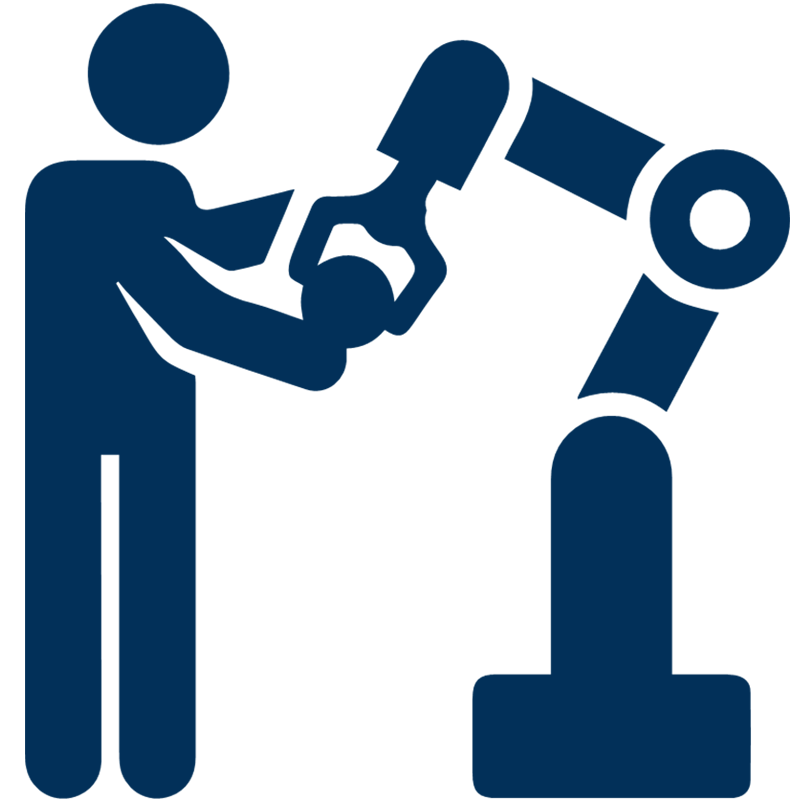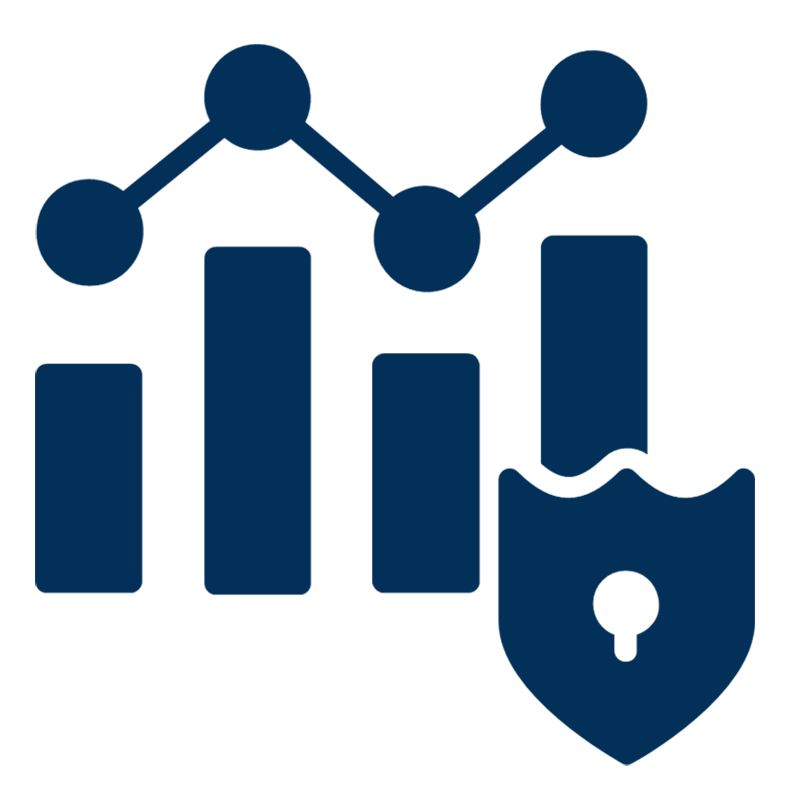Use Cases.
Our use case database tracks 133 use cases in the global enterprise technology ecosystem.
Filters allow you to explore use cases quickly and efficiently.
- (20)
- (20)
- (16)
- (10)
- (6)
- View all 9 Industries
- (7)
- (7)
- (6)
- (6)
- (3)
- View all 6 Functional Areas
- (6)
- (6)
- (6)
- (5)
- (5)
- View all 14 Enabled Capabilities
Selected Filters
20 use cases
|
Additive Manufacturing
Additive manufacturing (AM) is one use case for 3D printing technology. The other primary use case is rapid prototyping. Both use cases refer to the processes of synthesizing a three-dimensional object from successive layers of material. These objects can be of almost any shape or geometry and are produced from a 3D model or other data source. Additive Manufacturing is currently much less common than rapid prototyping due to the higher standards for quality and cost competitiveness. It is relatively expensive and time consumptive to produce a prototype using traditional manufacturing technologies. 3D printers can dramatically cut both the cost and time in many cases. And the quality of a prototype can generally be below that of a finished product. In contrast, traditional manufacturing technology is excellent at mass-producing finished products. For this reason, Additive Manufacturing is currently used primarily to produce customized products, small batches of replacement components, and designs that are particularly challenging for traditional manufacturing processes.
|
|
Asset Health Management (AHM)
Asset Health Management refers to the process of analyzing the health of an asset as determined by operational requirements. The health of an asset in itself relates to the asset's utility, its need to be replaced, and its need for maintenance. It can be broken down into three key components: 1) Monitoring: Tracking the current operating status of the asset. 2) Diagnostic Analysis: Comparing real-time data to historical data in order to detect anomalies. 3) Prognostic Analysis: Identifying and prioritizing specific actions to maximize the remaining useful life of the asset based on analysis of real-time and historical data.
|
|
Asset Lifecycle Management
An asset lifecycle is the series of stages involved in the management of an asset. It starts with the planning stages when the need for an asset is identified and continues all the way through its useful life and eventual disposal. The basic premise of asset lifecycle management is to extend your assets’ usability as far as you can, without losing any functionality, thereby decreasing total lifetime costs and increasing the economic value-add of the asset. For example, when maintenance is neglected, companies have to struggle with the resulting unexpected breakdowns, long delays, and costly emergency maintenance. Proper asset lifecycle management can improve the process of maintaining and managing valuable assets.
|
|
Autonomous Transport Systems
Autonomous transport systems provide unmanned, autonomous transfer of equipment, baggage, people, information or resources from point-to-point with minimal intervention. They can include the full range of transport vehicles, including trucks, buses, trains, metros, ships, and airplanes. They are most commonly deployed in controlled industries zones but are expected to soon be deployed in public areas with varying degrees of autonomy. We differentiate autonomous transport systems from autonomous vehicles. Whereas autonomous vehicles serve individual passengers (who may or may not own the vehicle), autonomous transport systems are interconnected fleets of vehicles owned by a business to service a particular need systematically. When discussing autonomous transport systems, the focus is on the interaction among vehicles in a sophisticated system that interfaces with ERP, MES, and other enterprise data management systems. The autonomy of the vehicle is one component of a larger interconnected system of autonomous and semi-autonomous activity with the objective of achieving business or organizational objectives, such as delivering the mail or moving soil from a mine to a processing facility.
|
|
Collaborative Robotics
A flexible form of human-machine interaction where the user is in direct contact with the robot while he is guiding and training it. A collaborative robot, or "cobot," is a robot that can safely and effectively interact with human workers while performing simple industrial tasks. However, end-effectors and other environmental conditions may create hazards, and as such risk assessments should be done before using any industrial motion-control application.
|
|
Digital Thread
A digital thread describes the framework which connects data flows and produces a holistic view of an asset's data across its product lifecycle. This framework addresses protocols, security, and standards. Typically, the digital thread connects digital twins, digital models of physical assets, or groups of assets. A digital twin is the current representation of a product or system, mimicking a company’s machines, controls, workflows, and systems. The digital thread meanwhile is a record of the lifetime of a product or system, from its creation to its disposal.
|
|
Edge Computing & Edge Intelligence
Edge computing and edge intelligence shifts data processing, computing applications, and services away from centralized cloud based servers to the edges of a network. This enables analytics to occur at the source of the data where it can trigger events in real time, without time delays as data moved between cloud servers. Existing cloud-based technologies do not solve problems of data analytics, software deployment, or updates and security for remote devices. Edge or Fog Computing solves the problem of managing large amounts of machine-generated data by processing data at the edge of the network and converting it into actionable, useful business information. Software can be deployed at various points in the network to not only automate monitoring and control, but also to apply embedded intelligent agents that can adjust device behaviors in relation to ongoing performance variables, thereby reducing running costs by reducing power consumption during off-cycles, or even detecting imminent failures and notifying technicians to perform preventative maintenance. Edge Computing also allows remote software deployment and secure M2M communication. Edge Computing leverages resources that are not continuously connected to a network, such as laptops, smartphones, tablets, and sensors. It covers a wide range of technologies, from Wireless Sensor Networks and mobile data acquisition to cooperative distributed peer-to-peer ad hoc networking and processing.
|
|
Indoor Positioning Systems
An indoor positioning system (IPS) is a network of devices used to locate people or objects where GPS and other satellite technologies lack precision or fail entirely, such as inside multistory buildings, airports, parking garages, and underground locations. A large variety of techniques and devices are used to provide indoor positioning ranging from reconfigured devices already deployed such as smartphones, WiFi and Bluetooth antennas, digital cameras, and clocks; to purpose built installations with relays and beacons strategically placed throughout a defined space. IPS has broad applications in commercial, military, retail, and inventory tracking industries. There are several commercial systems on the market, but no standards for an IPS system. Instead each installation is tailored to spatial dimensions, building materials, accuracy needs, and budget constraints. Lights, radio waves, magnetic fields, acoustic signals, and behavioral analytics are all used in IPS networks. Indoor positioning systems use different technologies, including distance measurement to nearby anchor nodes (nodes with known fixed positions, e.g. WiFi / LiFi access points, Bluetooth beacons or Ultra-Wideband beacons), magnetic positioning, and dead reckoning. They either actively locate mobile devices and tags or provide ambient location or environmental context for devices.
|
|
Intrusion Detection Systems
Intrusion detection systems monitor network traffic and search for suspicious activity and known threats, sending alerts when suspicious activity is identified. The overall purpose of an intrusion detection system is to inform IT personnel that a network intrusion has or may be taking place. Alerts will generally include information about the source address of the intrusion, the target/victim address, and the type of attack that is suspected. Each IDS is programmed to analyze traffic and identify patterns in that traffic that may indicate a cyberattack of various sorts. ID systems are being developed in response to the increasing number of attacks on major infrastructure and commercial sites and networks, including those of the Pentagon, the White House, NATO, ports, and electrical grids. The safeguarding of security is becoming increasingly difficult because the possible technologies of attack are becoming ever more sophisticated; at the same time, less technical ability is required for the novice attacker, because proven past methods are easily accessed through the Web. The adoption of IoT technologies also provides new avenues of attack through end points, such as connected devices, that often have weak security features.
|
|
Process Control & Optimization
Process control and optimization (PCO) is the discipline of adjusting a process to maintain or optimize a specified set of parameters without violating process constraints. The PCO market is being driven by rising demand for energy-efficient production processes, safety and security concerns, and the development of IoT systems that can reliably predict process deviations. Fundamentally, there are three parameters that can be adjusted to affect optimal performance. - Equipment optimization: The first step is to verify that the existing equipment is being used to its fullest advantage by examining operating data to identify equipment bottlenecks. - Operating procedures: Operating procedures may vary widely from person-to-person or from shift-to-shift. Automation of the plant can help significantly. But automation will be of no help if the operators take control and run the plant in manual. - Control optimization: In a typical processing plant, such as a chemical plant or oil refinery, there are hundreds or even thousands of control loops. Each control loop is responsible for controlling one part of the process, such as maintaining a temperature, level, or flow. If the control loop is not properly designed and tuned, the process runs below its optimum. The process will be more expensive to operate, and equipment will wear out prematurely. For each control loop to run optimally, identification of sensor, valve, and tuning problems is important. It has been well documented that over 35% of control loops typically have problems. The process of continuously monitoring and optimizing the entire plant is sometimes called performance supervision.
|
|
Rapid Prototyping
Rapid prototyping is the application of tools and processes to build and test prototypes during the proof of concept or proof of value phase in the product development process. It is generally used to establish product viability and to test product-market fit before investing in mass production. Rapid prototyping frequently accomplished with 3D printing technologies. However, it can also be achieved by using pre-made circuit boards, pre-programmed applications, hardware and Software Development Kits, or even with digital twins that emulate the desired product.
|
|
Real-Time Location System (RTLS)
Real Time Locating Systems (RTLS) provide knowledge by delivering precise visibility of critical assets, supply chain, manufacturing, and human, in real-time. For transportation and logistics enterprises, this knowledge means having end-to-end visibility and Traceability of all Containers, pallets, and packages. For manufacturers, it enables intelligent management and flow of all critical assets, whether in the facility or at a sprawling storage yard. Under security and safety operations, it means controlling employee access and ensuring they do not linger in hazardous areas beyond safety requirements.RTLS or indoor positioning systems (IPS) can be simply described as GPS on steroids but used indoors for the purpose of Tracking, locating and monitoring the activity of people and things. It is used in healthcare, manufacturing, smart warehouses, hospitality, education, and other industries for the purpose of maximizing workflow efficiency, safety, wayfinding, and inventory and asset control and has been proven to deliver significant return on investment (ROI).
|
|
Security Claims Evaluation
Security claims evaluation is an open and easily configurable cybersecurity platform for the evaluation of Endpoint, gateway, and other networked components’ security capabilities. In an industrial environment setting, monitoring of sensors provides a window into the system and operational efficiencies. Specifically, monitoring key parameters such as temperature, vibration, currents, and voltage provide the operator with insights into whether operations are normal, within normal failure mode, or whether there is an indication of a cybersecurity/security breach. Security claims evaluation provides a platform for users to evaluate whether data from the sensors under test is indicative of normal operation or abnormal operation in a non-invasive and non-intrusive manner. Furthermore, using Machine Learning in combination with real-time analytics capabilities, the sensor operation can be monitored and analyzed 24/7. Logging of abnormal events can be performed for further assessment and future remediation actions. Through running a pre-defined security test suite that encompasses pen testing, known vulnerabilities, and other testing methodologies, testbed users’ security claims can be evaluated at a single or multiple connection points – encompassing an Endpoint to a gateway to cloud assessment. A report based on the test results can be provided to users describing potential security weaknesses and proposed recommendations and remediation methods.
|
|
Smart City Operations
Smart city operations include the range of solutions required to enable smart city concepts by integrating Information and Communication Technology with senors and connected devices to optimize the efficiency of city operations and services. Smart city technology allows city officials to interact with both community members and city infrastructure and to monitor situation in the city in real time. Benefits for city managers include Tracking events in the city in real time, managing congestion, improving operational efficiency, reducing emergency response times, and enabling remote management. Modern solutions will aim to integrate all city data into a single dashboard. Both historical and current KPIs are measured to conduct performance reviews and gap analysis, and to plan future infrastucture and service investments.
|
|
Structural Health Monitoring
Structural health monitoring solutions ensure the safety and soundness of engineering structures such as a buildings and bridges. Structural health monitoring uses an assortment of sensors to collect and analyze data pertaining to any damage or deterioration that a structure may receive over the course of its life. The data that structural health monitoring systems acquire can help its users avoid structural failures and changes to the material and/or geometric properties of a structural system, including changes to the boundary conditions and system connectivity, which adversely affect the system's performance. The structural health monitoring process involves the observation of a system over time using periodically sampled response measurements from an array of sensors (often inertial accelerometers), the extraction of damage-sensitive features from these measurements, and the statistical analysis of these features to determine the current state of system health. For long term solutions, the output of this process is periodically updated information regarding the ability of the structure to perform its intended function in light of the inevitable aging and degradation resulting from operational environments. After extreme events, such as earthquakes or blast loading, health monitoring is used for rapid condition screening and aims to provide, in near real time, reliable information regarding the integrity of the structure.
|
|
Supply Chain Visibility
Supply chain visibility solutions provide visibility into the movement of raw materials, components, and finished goods from suppliers to manufacturers to the final buyer. Solutions are typically built on a centralized cloud-based platform that integrates data from multiple systems, including those those of partners. Technologies such as Smart Sensors, RFID, and digital ledger protocols can enable additional functionality. For example, digital ledger technology can keep logs of all transactions occurring on the network in a secure way, while providing supply chain partners with access to specific data. Visibility solutions can enhance the efficiency and transparency of supply chains, record the quantity and transfer of products as they change hands between supply chain nodes, track change orders and buy orders, process shipment notifications, manage trade documents and receipts, link physical products to Bar Codes, and share information about processing or manufacturing processes with suppliers, logistics providers, and customers.
|
|
Tamper Detection
Tamper detection technologies enable a device to detect and initiate appropriate defensive actions against active attempts to compromise the device integrity or the data associated with the device. The tamper detection design can be implemented to sense different types of tampering, depending on the anticipated threats and risks. The solutions used for tamper detection typically include a suite of sensors specialized on a single threat type together with an alert mechanism, which can be audible or sent to a monitoring system. Typical threat types include physical penetration, hot or cold temperature extremes, input voltage variations, input frequency variations, and x-rays.
|
|
Vehicle Telematics
Vehicle Telematics enables the monitoring of location, movement, status, and behavior of a vehicle within a fleet. This is achieved through a combination of a GPS receiver and an electronic GSM device that is installed in each vehicle, which then communicates with the user and cloud-based software. Additional sensors and Actuators may be added to the system to enable additional functionality, such as vehicle remote control and driver status Tracking. Telematics systems provide analytics to determine the optimal route based on location and traffic information, the vehicle's condition, and operational cost prediction.
|
|
Visual Quality Detection
Visual quality detection automates the analysis of products on the production line or equipment in production facilities for quality control using machine vision. Machine vision is the technology and methods used to provide image-based automatic inspection. It is a system that uses visual computing technology to mechanically “see” the activities that take place one by one along the production line. The components of an automatic inspection system usually include lighting, a camera or other image acquiring device, a processor, software, and output devices. Machine vision surpasses human vision at the quantitative and qualitative measurement of a structured scene because of its speed, accuracy, and repeatability. A machine vision system can easily assess object details too small to be seen by the human eye, and inspect them with greater reliability and lesser error. On a production line, machine vision systems can inspect hundreds or thousands of parts per minute reliably and repeatedly, far exceeding the inspection capabilities of humans. It also uses Artificial Intelligence to mimick human level intelligence to distinguish anomalies, parts, and characters, while tolerating natural variations in complex patterns. It merges the adaptability of human visual inspection with the speed and reliability of a computerized system.
|
|
Warehouse Automation
Warehouse automation is the application of specialized equipment and storage and retrieval systems to automate warehousing tasks previously handled by manual labor. Warehouse automation takes many forms, including machines and robots that aid workers with processes related to inventory handling, sensors that track goods, and software that automates record keeping. Leveraging warehouse automation solutions can help warehouses increase productivity, improve the accuracy of inventory records, reduce labor costs, and improve safety.
|





.png)









.png)








